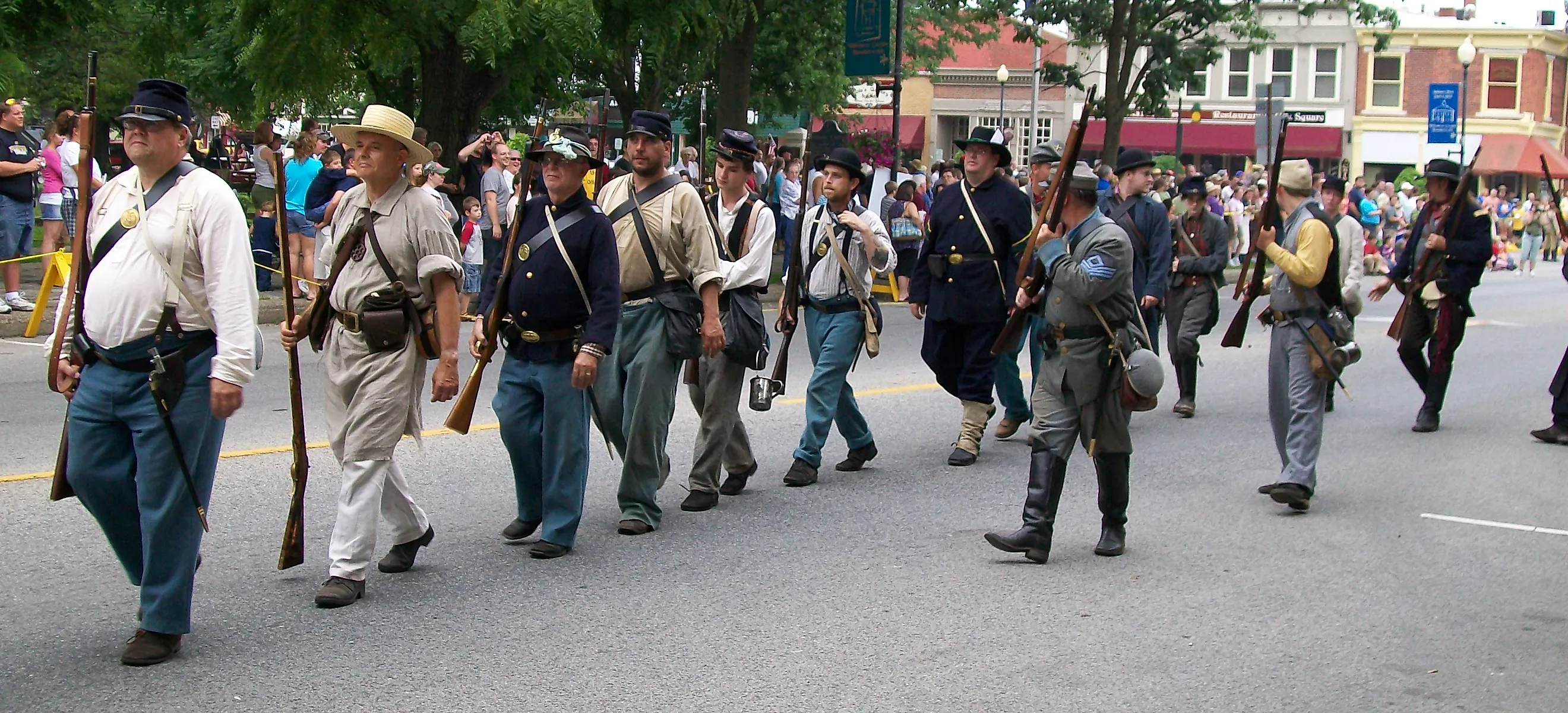
4 Historic Battles That Shaped Indiana
Well before Indiana became known for its farmland, basketball, and covered bridges, it was a land marked by conflict and change. Native communities thrived here, and the area served as a crossroads for European powers, American revolutionaries, and later Civil War armies. Throughout the 1700s and 1800s, key battles, such as Vincennes, Tippecanoe, Fort Wayne, and Corydon, decided who controlled the land, influenced the region’s culture, and helped define the state of Indiana that would become.
The Battle Of Vincennes (1779)
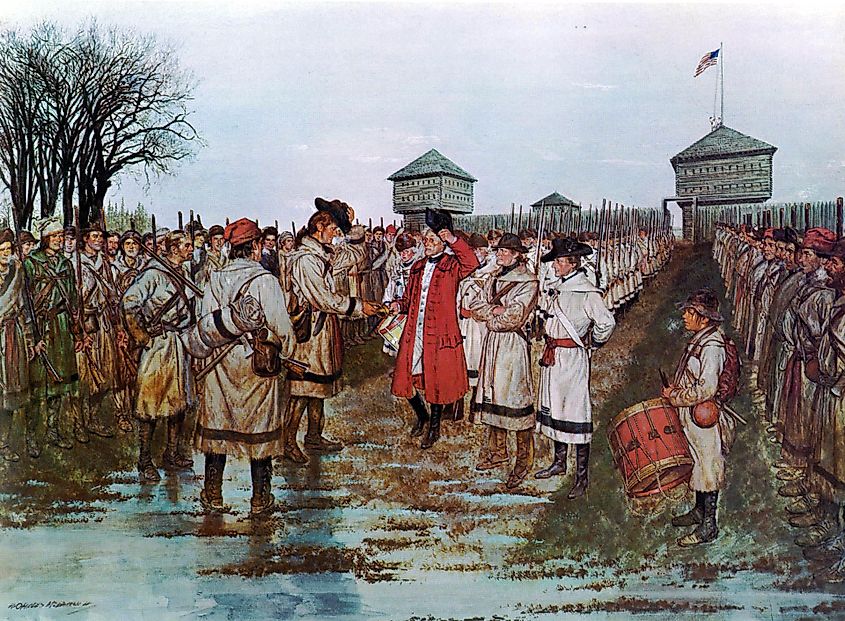
Lieutenant Governor Henry Hamilton surrenders to Colonel George Rogers Clark, February 25, 1779, painting by Hugh Charles McBarron Jr.
In early 1779, during the American Revolution, a group of frontiersmen led by George Rogers Clark undertook a dangerous mission to reclaim Fort Sackville, located in Vincennes near the Wabash River. The fort was held by British Lt. Governor Henry Hamilton, who was actively supporting Native groups resisting American expansion.
Clark, along with roughly 170 men, set out from Kaskaskia in modern-day Illinois in the dead of winter, as melting snow turned to cold rain and rising floodwaters. While many soldiers suffered frostbite and exhaustion, few deserted the mission.
On February 23, they surrounded the fort. Clark used deception to make his numbers appear greater than they were, reportedly marching his men in front of the fort multiple times. After two days, Hamilton surrendered. The victory gave the Americans control of the Northwest Territory and weakened British alliances with Native nations in the area.
The Battle of Vincennes remains one of the most remarkable campaigns of the Revolutionary War’s western front. Clark’s leadership and the men’s perseverance became legendary, and the event is still commemorated today at the George Rogers Clark National Historical Park.
The Battle Of Tippecanoe (1811)
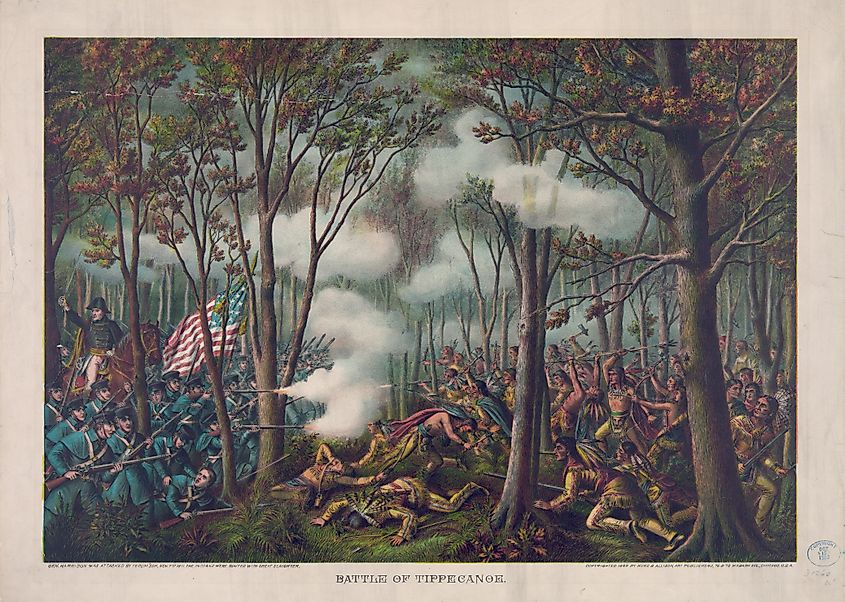
Title: Battle of Tippecanoe Abstract: Print shows American troops under the leadership of General William Henry Harrison fighting the Indian forces of The Prophet, Tenskwatawa (the brother of Tecumseh) in a forest. Tenskwatawa was part of Tecumseh's Indian confederation. Physical description: 1 print : chromolithograph ; 55.2 x 71.7 cm (sheet) Notes: Caption: Gen. Harrison was attacked by Tecum'seh Nov. 7, 1811. The Indians were routed with great slaughter.; Copyright 1889 by Kurtz & Allison.; Title from item.
By 1811, Native resistance to American expansion had grown increasingly organized. Shawnee leader Tecumseh and his brother Tenskwatawa, known as The Prophet, sought to form a confederation of tribes to oppose U.S. encroachment on Indigenous lands. They established Prophetstown near the Tippecanoe River and the Wabash River.
William Henry Harrison, then governor of the Indiana Territory, viewed the alliance as a direct threat. He marched a force of about 1,000 soldiers toward Prophetstown in November 1811 with the intention of intimidating the settlement or forcing its disbandment. When Tecumseh was away on a diplomatic mission, The Prophet decided to strike.
Before sunrise on Nov. 7, Native warriors launched a surprise attack on Harrison’s encampment. Fighting was intense and chaotic, with combat unfolding in forested terrain. Though U.S. troops suffered considerable losses, they eventually pushed back the Native force. Prophetstown was later burned by Harrison’s men.
The battle disrupted the momentum of Tecumseh’s confederation and marked a setback for the broader Native resistance movement. Although some tribes continued to fight alongside the British during the War of 1812, the unity Tecumseh had worked to build was weakened.
Years later, “Tippecanoe and Tyler Too” became a popular campaign slogan during Harrison’s successful run for president in 1840, referencing his role in the battle. The phrase caught on, helping him win the election and become the ninth president of the United States in 1841.
Today, the battlefield is preserved as Tippecanoe Battlefield Park, where visitors can explore the site and learn about the complexities of the conflict.
The Siege Of Fort Wayne (1812)
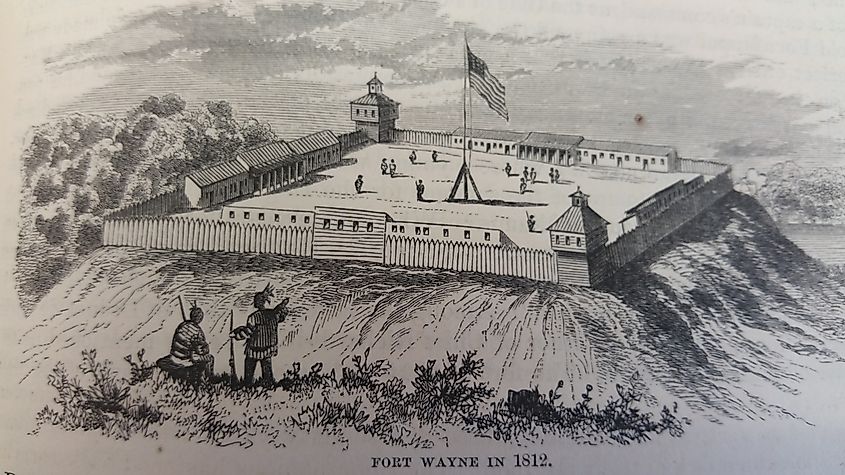
Less than a year after the Battle of Tippecanoe, Indiana’s frontier again found itself at the center of military conflict. During the War of 1812, Native groups allied with the British surrounded Fort Wayne, a military outpost at the confluence of the St. Marys, St. Joseph, and Maumee rivers. The fort was a key point of defense and trade, and its fall would have given British-allied forces a stronger foothold in the region.
From Sept. 5 to Sept. 12, 1812, Fort Wayne was under siege. Supplies became limited, and both soldiers and civilians prepared for a possible assault. Concern increased as each day passed.
General William Henry Harrison arrived with reinforcements, bringing much-needed support to the fort. After his arrival, the Native forces withdrew, and Fort Wayne remained under U.S. control. Some accounts describe Potawatomi leader Winamac attempting to set the fort’s wooden walls on fire using flaming arrows—one of several tactics reportedly used during the attack.
The Battle Of Corydon (1863)
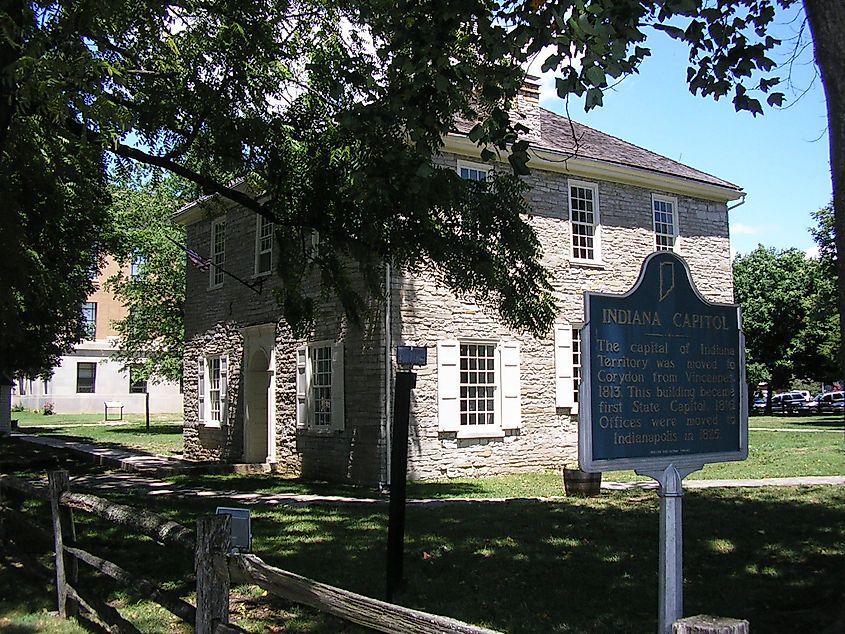
Indiana was a Union state during the Civil War, but it still saw some fighting within its borders. On July 9, 1863, the town of Corydon in southern Indiana became the site of the state’s only Civil War battle. This clash happened during Confederate General John H. Morgan’s raid through Indiana, Kentucky, and Ohio.
Morgan led about 2,400 cavalrymen across the Ohio River into Indiana, moving north toward Corydon. In response, roughly 400 local volunteers and militia, known as the home guard, prepared to defend their town. Although many had little training and limited weapons, they set up a line of defense, including a shallow trench now known as the “Old Battle Ground.”
The fighting lasted about 30 minutes. The defenders, outnumbered and outgunned, were quickly overcome. Confederate soldiers entered Corydon, took supplies, looted stores, and demanded a ransom before moving on. Morgan was captured in Ohio later that month, ending the raid.
Local accounts from the battle include a story about a drummer boy who reportedly kept playing during the fighting until he was captured. While not documented in official records, this story reflects how even young people in small towns were involved in the war and its events.
Today, the Battle of Corydon Memorial Park marks where the battle took place. Though brief, the fight remains a significant part of Indiana’s Civil War history.
From Vincennes to Corydon, these historic battles happened in different eras and under different circumstances, but together they helped shape the Indiana we know today. They hold stories of revolution, resistance, life on the frontier, and civil war. Visiting these battle sites offers a chance to learn about military history and connect with the real people behind the events: soldiers, Native leaders, neighbors, and even young people who found themselves caught in the middle.











